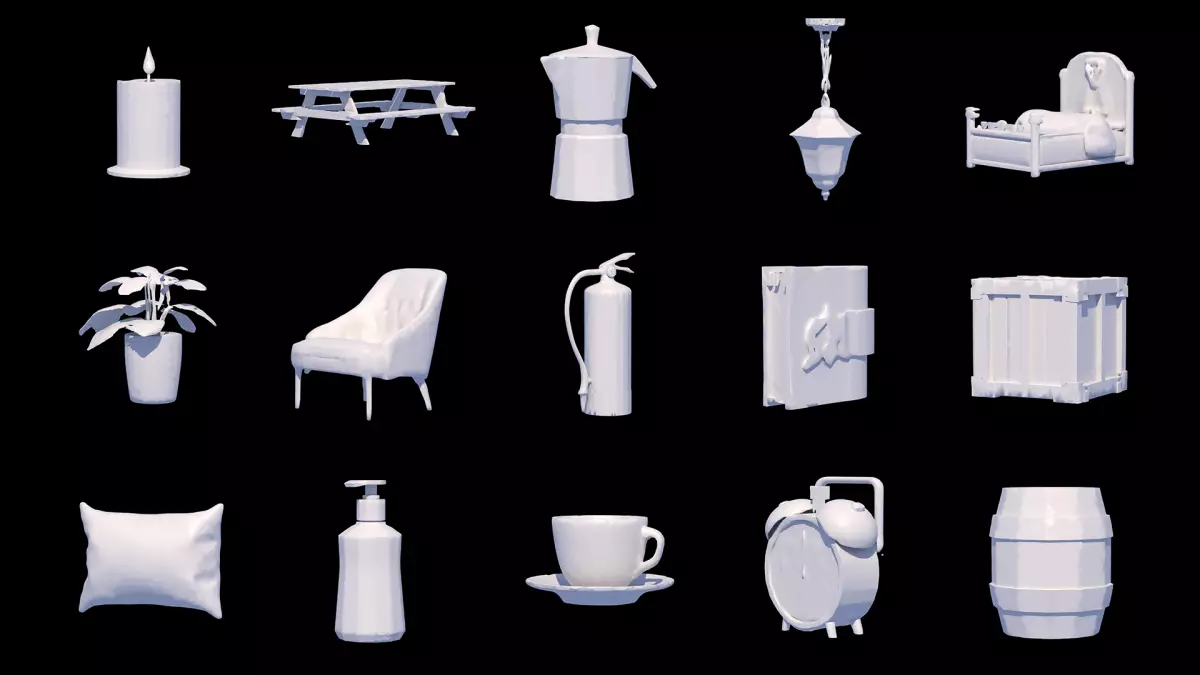Roblox is making groundbreaking strides in the world of game development with the introduction of its new tool, Cube. This generative AI-driven initiative aims to revolutionize how creators build 3D objects, giving them unprecedented creative power. Announced on a Monday that drew in developers and gamers alike, the Cube initiative not only enhances the capabilities of creators within the Roblox ecosystem but also sets a precedent for the future of collaborative gaming design. By providing an open-source version of Cube, Roblox is essentially opening the door for an entire community of developers outside its platform to participate in this evolutionary leap in 3D modeling.
Empowering Creators with Mesh Generation Technology
At the heart of the Cube’s offering lies the beta version of its mesh generation tool. This feature has the potential to streamline the creation process by allowing users to generate complex 3D representations of objects by providing simple text prompts. The user-friendly design reflects a trend towards democratizing game development; for instance, let’s say a creator types “generate an orange racing car with black stripes,” and within moments, a 3D model appears, ready to be incorporated into their game. This capability eliminates barriers that once limited indie developers, enabling them to engage in projects that were previously seen as too ambitious or technically challenging.
The beauty of this innovation lies not only in its efficiency but in its adaptability. Once the object is generated, creators are not left without agency; they can fine-tune these models within Roblox Studio, ensuring that the final product aligns with their vision. This level of customization can foster unparalleled originality, allowing developers to prioritize their artistic intentions rather than get bogged down in technical limitations.
The Broader AI Toolkit: Revolutionizing Gameplay
Alongside mesh generation, Roblox is set to unveil a suite of additional AI tools, including text generation, text-to-speech, and speech-to-text capabilities. These features are expected to enhance the overall gaming experience by making gameplay more interactive and immersive. Imagine characters that not only respond to player commands but can engage in meaningful conversations, or NPCs that narrate a story, providing a richer context within the game. This is a massive leap towards immersive storytelling in games, transforming static interactions into dynamic narratives.
Moreover, the integration of voice commands could cater to a broader audience, making games more accessible to individuals who might struggle with traditional controls. With these advancements, Roblox is actively paving the way for a gaming ecosystem that prioritizes user interaction and creativity over mere gameplay mechanics.
Future Aspirations: Toward a 4D Creation Paradigm
Roblox has a long-term vision, famously described as “4D creation,” which transcends traditional gameplay experiences. The concept of integrating interaction between objects, environments, and players as the “fourth dimension” is quite revolutionary. The prospect of utilizing generative AI not just for individual objects but for creating entire scenes—like a dynamic forest where leaves shift colors with the seasons—opens a floodgate of possibilities for developers. It’s a tantalizing glimpse into a world where the virtual and the organic intermingle seamlessly, creating a living, breathing environment for players.
The Broader Context: Balancing Innovation with Industry Concerns
While the excitement surrounding Roblox’s Cube initiative is palpable, it’s essential to consider the growing debate surrounding AI’s impact on job security within creative industries. A study by CVL Economics has suggested that a significant portion—13.4%—of gaming jobs could be affected by AI advancements by 2026. This raises ethical questions about the sustainability of traditional roles in the face of rapid technological evolution.
As more companies, like Tencent, delve into generative AI for 3D modeling, the industry faces a pressing crossroads. The real challenge is not merely the integration of these new technologies, but how to do so ethically and responsibly, ensuring that human creativity remains at the forefront of game development narratives rather than being overshadowed by AI automation.
In sum, while the introduction of Cube marks an exhilarating step into the future for Roblox and its creators, it also invites a necessary conversation about the role of AI in the gaming landscape. As we eagerly anticipate these innovations, it will be fascinating to see how they shape the narrative of gaming in years to come.

